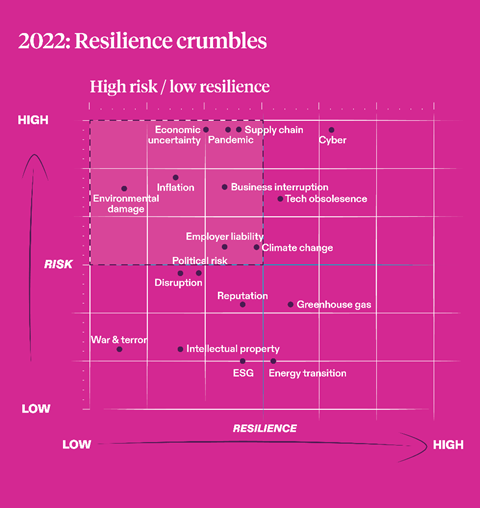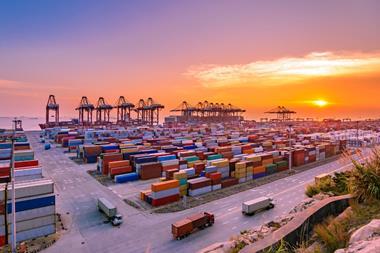Businesses are facing perfect storm of high risk / low resilience as geopolitics moves rapidly up the agenda
Beazley’s Risk & Resilience research reveals that businesses face a perfect storm of a high risk / low resilience world - with leaders predicting risk will peak in summer 2022.
Adrian Cox, CEO, Beazley says: “Business leaders continue to face perhaps the stiffest test in a generation as the world reels from the economic whirlwind unleashed by COVID-19 to the unfolding horror and ensuing geopolitical dislocation caused by the Russian invasion of Ukraine.
”Business resilience is under real threat as companies adjust to a new world order in which everything, from trading relationships, through commodity prices to supply chains, needs to be re-evaluated from the ground up.
“As insurers we must step up and help businesses work through this perfect storm of a high risk / low resilience world.”
Beazley undertook its annual survey of business leaders’ attitudes to risk and resilience in January, before the Russian invasion of Ukraine.
At that point, only 25% of those surveyed felt they were operating in a high-risk environment. However, asked to project forward six months almost half (43%) of UK leaders and over a third (38%) of US leaders anticipate that they will be operating in a high-risk world by the middle of the year.

Geopolitical risk is rapidly rising
Geopolitical risk has moved rapidly up the risk agenda since the previous survey, with war risk ranking top for over a fifth (22%) of UK and US leaders by summer 2022.
Economic uncertainty, which dominated business thinking even before the invasion, has risen 6 percentage points on the same time last year, with 27% ranking this their top risk in January 2022, rising to 28% in 6 months’ time.
When asked about inflation, well over half of respondents (55%) globally say they are very or moderately concerned about their ability to mitigate it during 2022. In the US, however, that proportion rises to 65%, the highest of any country surveyed.
Other fast-rising risks in January 2022 include employer risk, intellectual property (IP) risk and energy transition risk, which have all broadly doubled on 2021 levels.
Resilience crumbles
Concerningly, as risk perceptions overall have risen, so perceived resilience has fallen back dramatically. Only 27% report feeling highly resilient about managing risk in January 2022, compared to over a third of US and UK business leaders (35%) believing they had the required resilience when we asked this question last year.
As last year, UK business leaders are notably less confident than their US peers.
Emerging threats from the changing world of work post-pandemic are showing up in the fall in perceived employer resilience and concerns over disruption due to factors such as changing customer behaviour or market shifts.
High risk-low resilience
The threats of greatest concern to businesses appear in the top left high risk / low resilience quadrant of the Risk & Resilience matrix. Economic uncertainty, and supply chain risk dominate in this quadrant along with pandemic risk. New entrants to this quadrant this year include environmental damage and inflation risk.
When the question was asked in January, war and terror were an area where business believed their resilience was low but even at that point they were only perceived as low risk.
If asked the same question today, it is likely this class of risk may have moved up into the high risk / low resilience quadrant.
High risk / high-resilience
Cyber risk stands clear of every other as a top risk to business but one to which businesses feel particularly resilient.
This positive sense of resilience may reflect the fact that almost half of respondents say their top priorities are investment in improved cyber security (43%) and risk management and loss prevention initiatives (42%).




















No comments yet